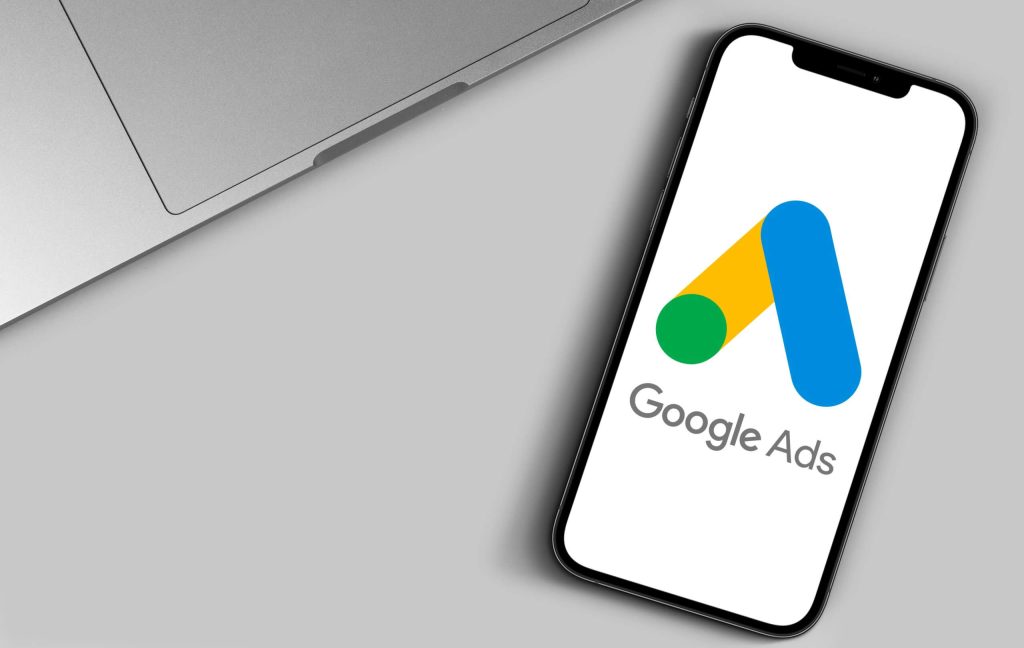The Ultimate Guide to Google Ads
The Ultimate Guide to Google Ads
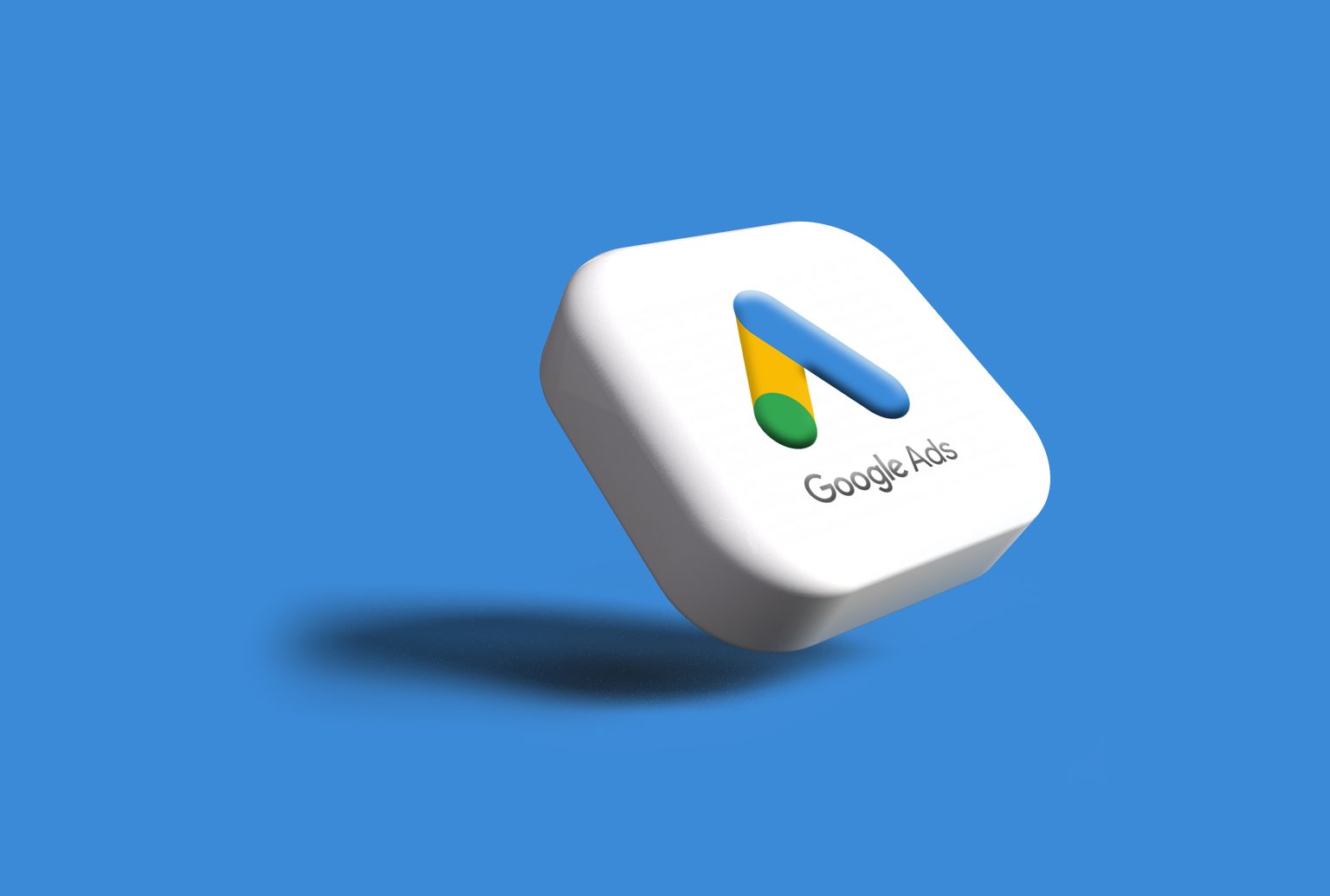
- Google Ads 101
- Google Ads Vocab
- How does Google Ads Work?
- Setting Up Google Ads
- What are the Different Types of Google Ads Campaigns?
- Using a Google Ads Management Company
Google Ads 101
If your brand isn’t utilizing Google Ads to boost engagement, you’re missing out on billions of searches daily. As you probably know, Google is the most commonly used digital marketing platform, making up 90% of the search engine market share.
Google isn’t going anywhere, so your brand must utilize it for all its worth. With this in mind, we decided to create a guide to help navigate the complexities of this search engine monolith. So, let’s start with the basics: What is Google Ads?
Specifically, Google Ads is a pay-per-click (PPC) advertising platform. Advertisisers are paid when a user clicks on an ad. This is a great way to drive qualified traffic to your site and help direct potential customers to your services. Partnering with a reputable Google Ads management company can greatly enhance your campaign performance and ensure optimal results. But is all this effort worth it?
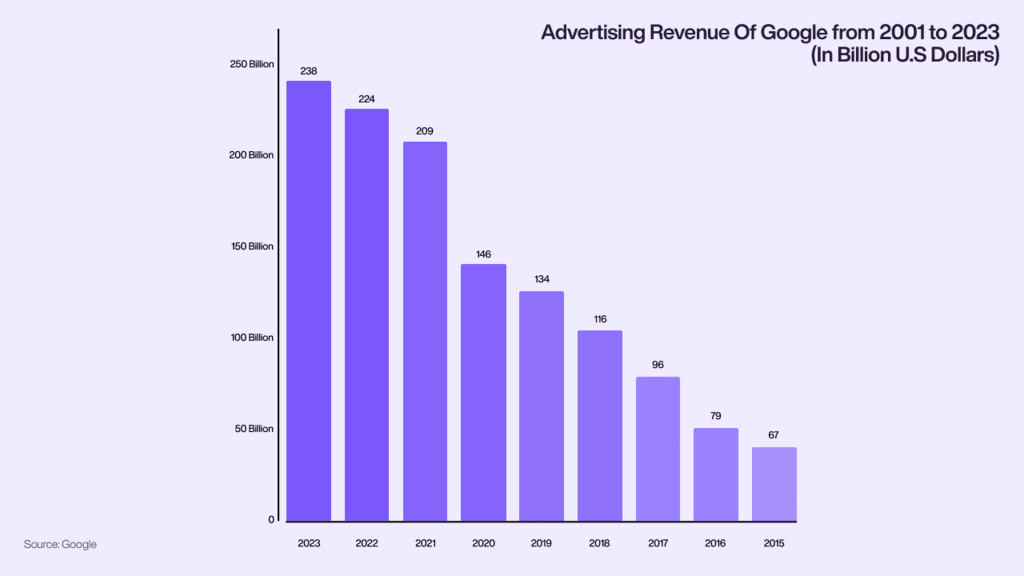
Is Google Ads Worth It?
If the billions of searches per day aren’t enough to convince you, remember that Google’s ad revenue amounted to 237.86 billion U.S. dollars in 2023. Advertisers worldwide are putting their resources into this platform, getting desired results, and returning for more.
Along with its popularity, Google is one of the longest-running ad platforms, so it has authority over other advertising sites. Google Ads can benefit your brand for the following reasons:
- They get your product or services in front of new audiences.
- They increase lead generation.
- Successful Google Ads can boost sales revenue
- They are the perfect advertising tool to promote time-sensitive content.
- Google Ads can help retarget previous website visitors.
Every brand could benefit from the above list, so it’s essential to determine your brand’s goals to ensure you’re using Google Ads to boost your ROI. Before we get too ahead of ourselves, let’s review some of the most common Google Ads terms to help you navigate the platform. And if you’re considering outsourcing, finding the right Google Ads agency can streamline your campaign management.
Google Ads Vocab
As with every advertising platform, there is a never-ending list of terms and acronyms to know. To simplify the process, we’ve compiled the most important terms.
| Ad Assets | This includes all ad sections, including headlines, descriptions, and links to your website. It may also include call buttons and location information. |
| Ad Rank | Your ad rank is based on factors such as your bid amount, the quality of your landing pages, and the context of a person’s search terms. Ad rank determines if your ads are eligible to be displayed on Google. |
| Keyword | Keywords are phrases you bid on that align with the search terms of your target customers. The keyword types include broad match, exact match, and phrase match. |
| Display Network | The Google Display Network is a collection of 200 million sites and apps where Google Ads can appear. |
| Impressions | An impression occurs every time your ad shows up on Google. Measuring impressions is essential to calculating the clickthrough rate of your ad. |
| CTR (clickthrough rate) | This metric measures the number of clicks your ad receives divided by the number of times your ad is shown. The CTR gauges the efficiency of your keywords, so the higher the CTR, the better. |
| Bidding Strategy | The bidding strategy is a set of rules and parameters set by the advertiser to determine the cost per action on ads. There are several different types of bidding types based on your campaign goal. |
| Campaign Type | You must choose a campaign type before launching your ads. The types determine the ad formats, assets, and the type of targeting. We’ll get more into the specific campaigns later on in the article. |
| Conversion Rate | This is the number all advertisers want to know. The conversion rate measures the primary actions against the number of clicks on an ad. These actions include making a purchase, submitting a form, or a subscription signup. A high conversion rate determines that the ad is effective. |
| Quality Score | This score (measured from 1-10) determines the position of your ad on a search engine. Your landing page experience, ad relevance, and CTR influence the score. |
How does Google Ads Work?
Google Ads consists of several factors that make an ad work: the searcher, the advertiser, and the Google Ads platform. This collaboration creates revenue for advertisers while enabling new customers to purchase products. Let’s check out the four steps of the Google Ads process.
Keyword Bidding
Initially, advertisers compete by bidding on keywords to determine where their ads appear in search results. These bids vary significantly from a few dollars to several hundred per keyword. Luckily, Google Ads is generally accessible for businesses of all sizes because you can create a daily budget that Google stays within. You can also pause your spending at any time.
Users Search for Keywords on Google
The next step relies on potential users using search-intent keywords that an advertiser bid on. If your keyword bid is successful, a potential customer will likely click on your product or service because it relates to their search.
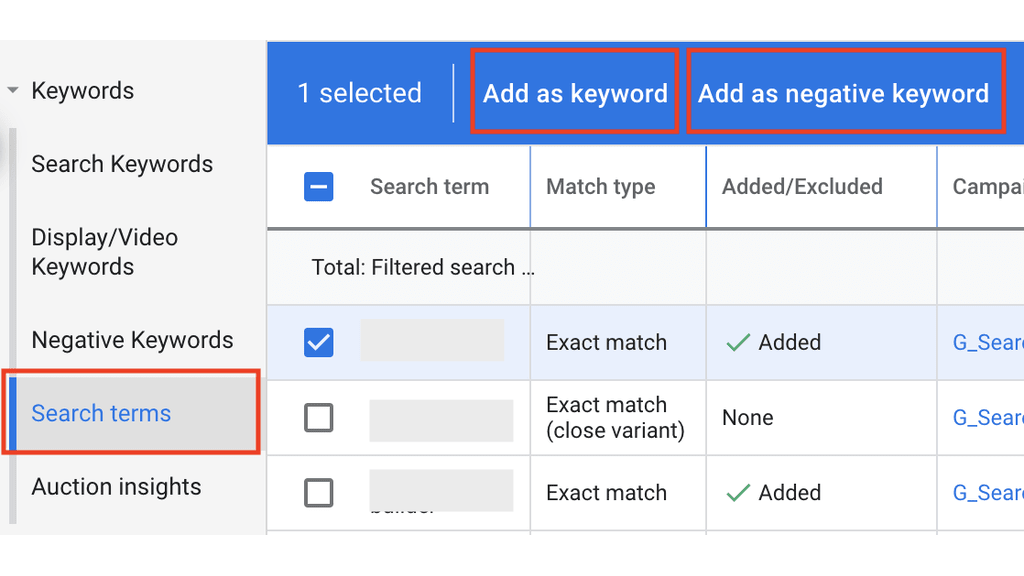
Google Displays Ads Based on Rank
Once a user inputs their search term into Google, Google ranks all applicable ads in a split second. Google arranges advertisers in a hierarchy from position one to the sum total of all available ad slots on the search results page. The arrangement is based on the keyword’s quality score and the bid amount.
Customer Click
The last and arguably the most important step is the customer click. If a customer sees an ad featuring their searched keyword, they may click through your site. From there, they will hopefully convert and make a purchase.
Setting Up Google Ads
Getting started with Google Ads is fairly simple, but following the correct steps is important. Because Google Ads has been used by advertisers for almost 20 years, several templates are available to help you begin your ad campaign.
To begin, you must set up your Google Ads account and click “Start Now” on the Google Ads homepage. You can then select your advertising goal and begin crafting your ad copy. Then, you can choose your keywords and budget and set your ad location. Once you provide your payment details, your first Google Ad campaign is ready to go. Remember, if the setup feels overwhelming, consider partnering with a reputable Google Ads agency to simplify the process.
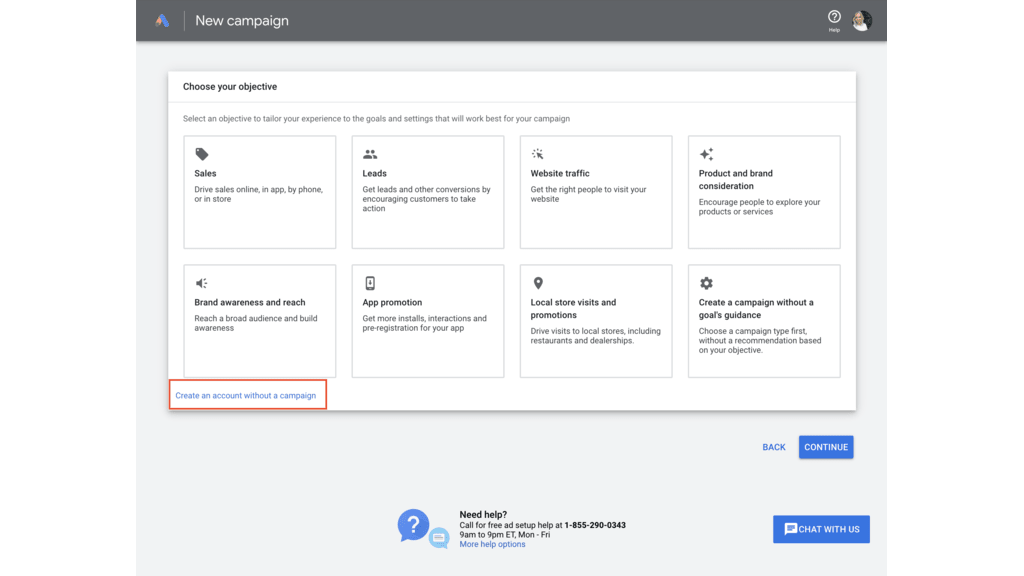
What are the Different Types of Google Ads Campaigns?
Each Google Ad campaign serves a distinct purpose and employs different strategies. Within each campaign type ares several ad formats with their own unique advantages. Your campaign choice depends on your campaign goals.
Search
This is the most common type of campaign on Google. A search campaign benefits advertisers because it appears above organic search listings. Because sponsored ads appear above organic results, they are much more likely to be clicked.
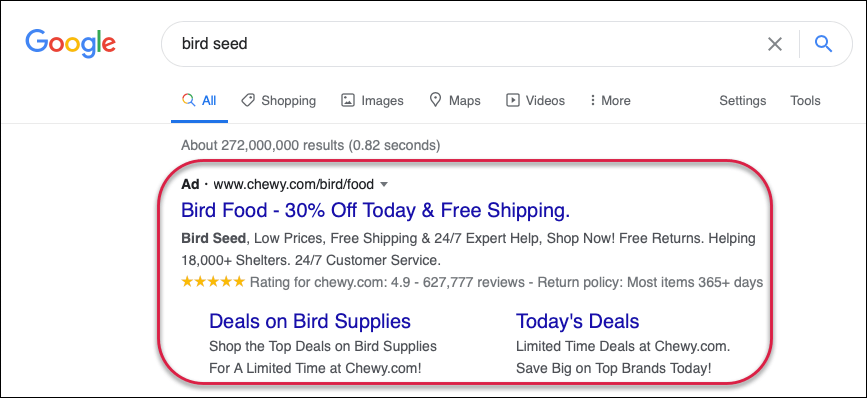
Display
Display campaigns place banner ads across the expansive Google Display Network (GDN) we mentioned earlier. These are typically visually engaging ads that feature animations or images to convey marketing messages. Unlike keyword-based targeting, Display ads allow advertisers to select specific sites or placements based on audience interests and demographics. Display campaigns boost brand awareness, especially for businesses with longer sales cycles, like B2B service providers. They’re also effective for retargeting existing customers.
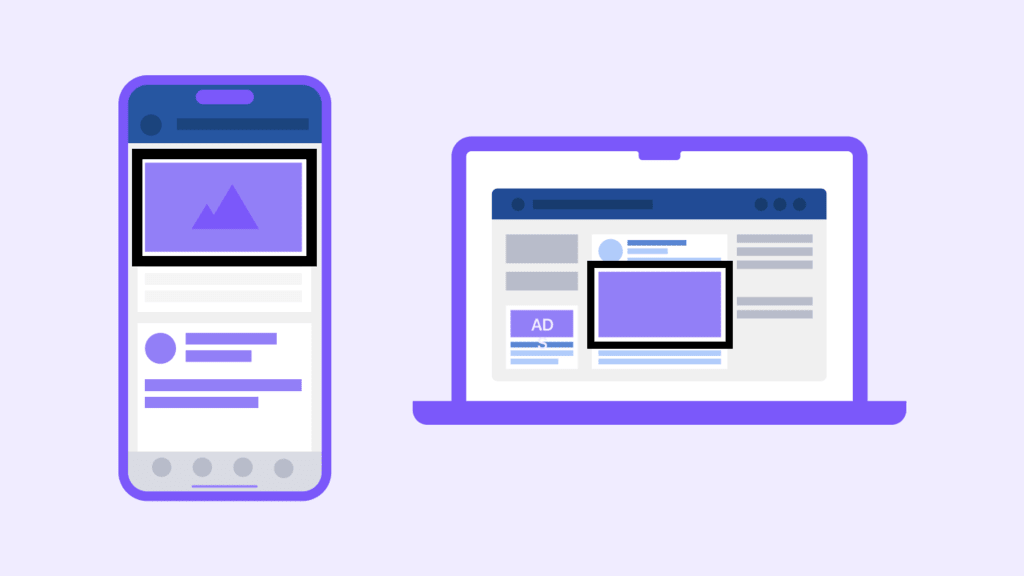
Shopping
Shopping campaigns in Google Ads showcase your product images, prices, and other details to people searching on Google. You need to connect your product info to Google Merchant Center to run these ads. They’re super targeted and appear to those looking for your product or something similar. And because users often have a good idea of what they want, these ads do really well in getting them to buy. This type works best for ecommerce businesses.
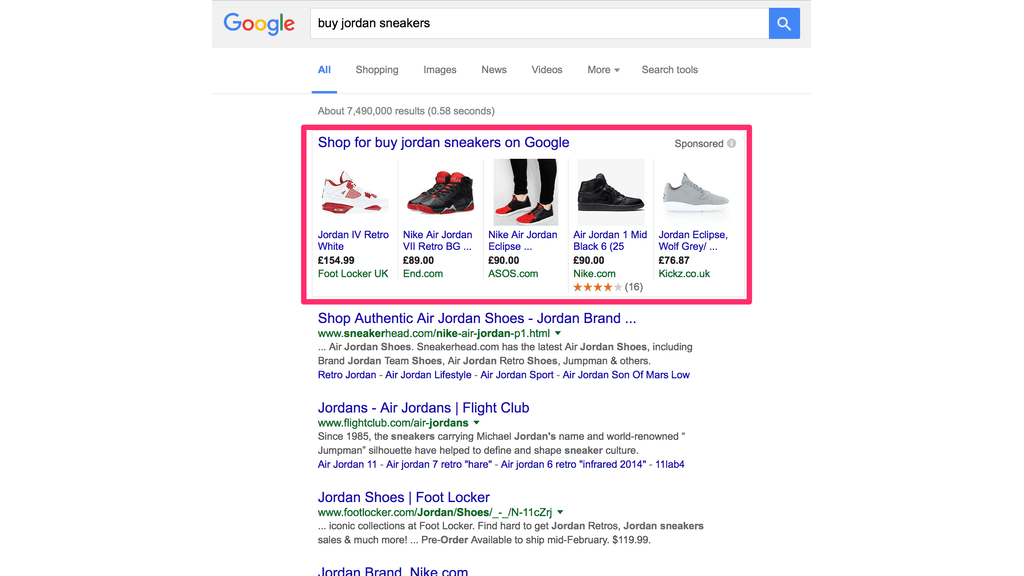
Video
Video ads are best suited for brand awareness efforts to engage a large audience quickly. YouTube video campaigns tap into a vast audience and have several different formats. It’s important to remember that these ads have specific requirements and face higher disapproval rates than other campaign types. Video ads also come with tracking restrictions, so keep that in mind when selecting your campaign type.

App
The App campaign is perfect for businesses promoting Android or iOS apps. These ads are fully automated and managed by Google to meet your objectives. They appear across various platforms like Google Play, search, Display Network, and YouTube. You provide assets, and Google handles the rest, testing different ad formats and optimizing for performance. App ads are best for driving installs, increasing engagement, or generating pre-registrations for Android apps.
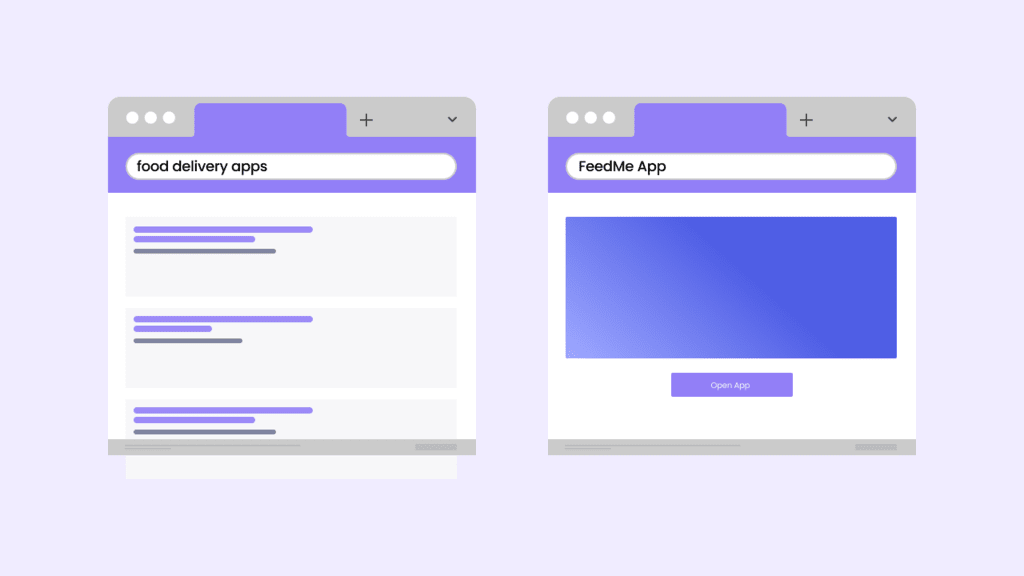
Performance Max
Google combined smart campaigns and local campaigns into Performance Max. These ads display on various channels like Search, YouTube, and Display. Google creates and manages your ads; you just need to provide content. It’s great for all kinds of businesses, but you have less control over where your ads appear. It’s a good option for new advertisers and those who want ads across different channels. It’s also helpful for getting sales and leads because Google optimizes your ads based on performance.
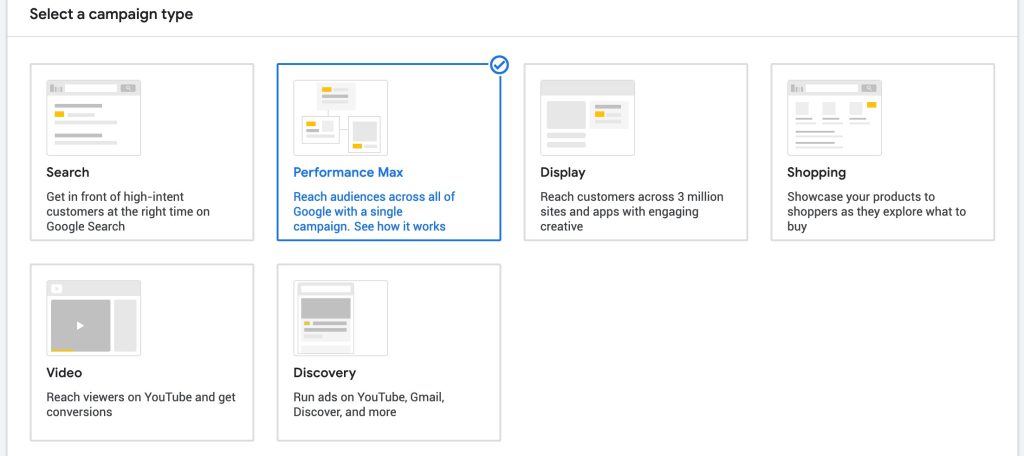
Demand Gen
As of late 2023, Demand Gen campaigns have fully replaced Discovery campaigns. This campaign type lets you run ads across YouTube (including Shorts), Discover, and Gmail. Google also manages these campaigns, so they determine placements and assets based on ad performance and expected outcomes. They are ideal for brand awareness and reconnecting with recent website visitors.

As you explore Google Ads’ diverse campaign types, think of each as a unique tool in your marketing toolbox. Whether it’s Search, Display, Shopping, Video, App, or Demand Gen campaigns, each offers its own way to reach your audience and achieve your goals.
Using a Google Ads Management Company
Whether you want to increase leads, boost sales, or enhance brand awareness, Google Ads offers a powerful toolkit for achieving your marketing objectives. While Google Ads can greatly improve your brand’s ROI, navigating it can be complex without the proper guidance. That’s where a strategic growth partner like Adspace comes in. If you aim to elevate your Google Ads campaigns and maximize results, consider partnering with Adspace for expert assistance and support.
Download our free guide to learn how to measure SEO ROI through content marketing
Download Download







